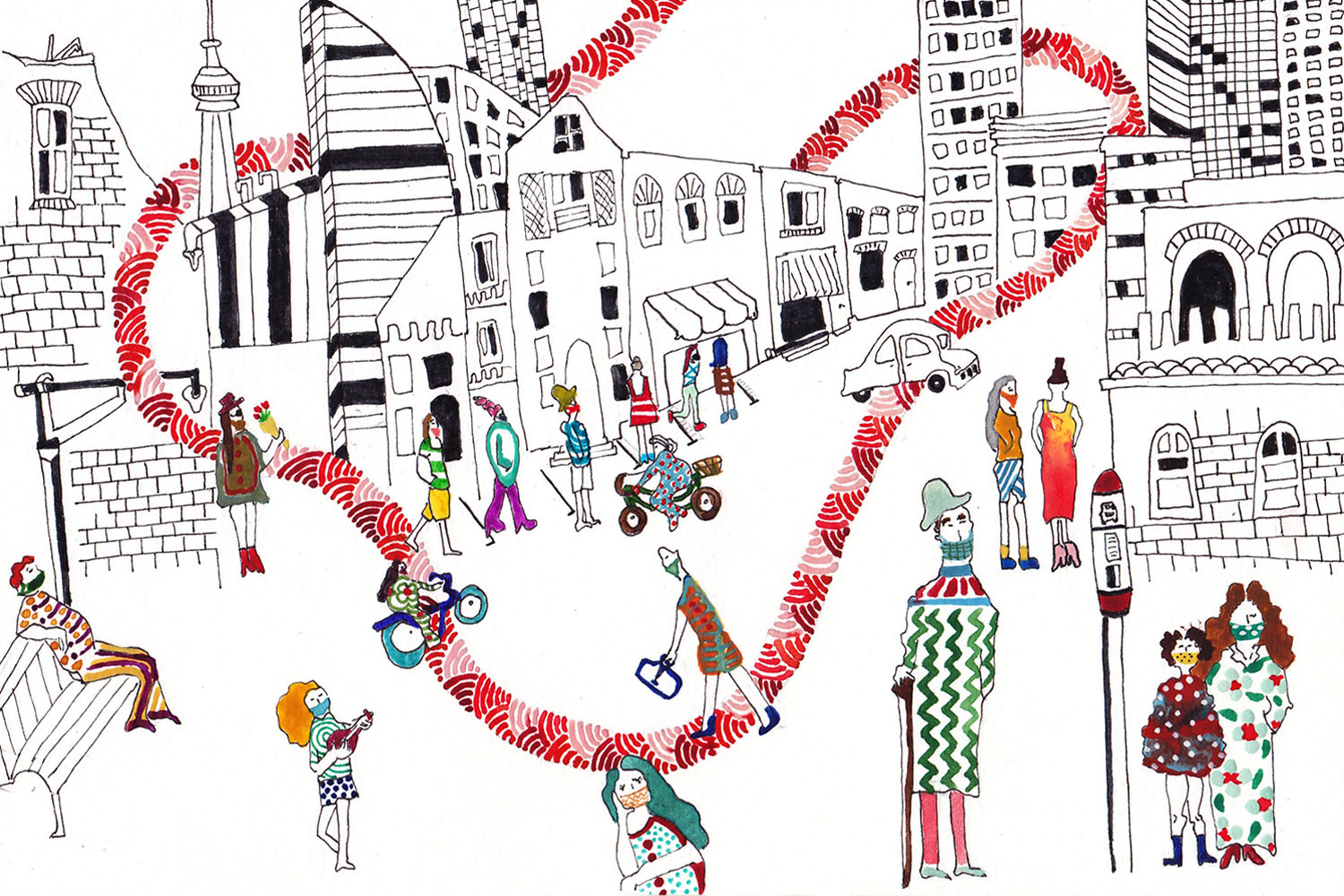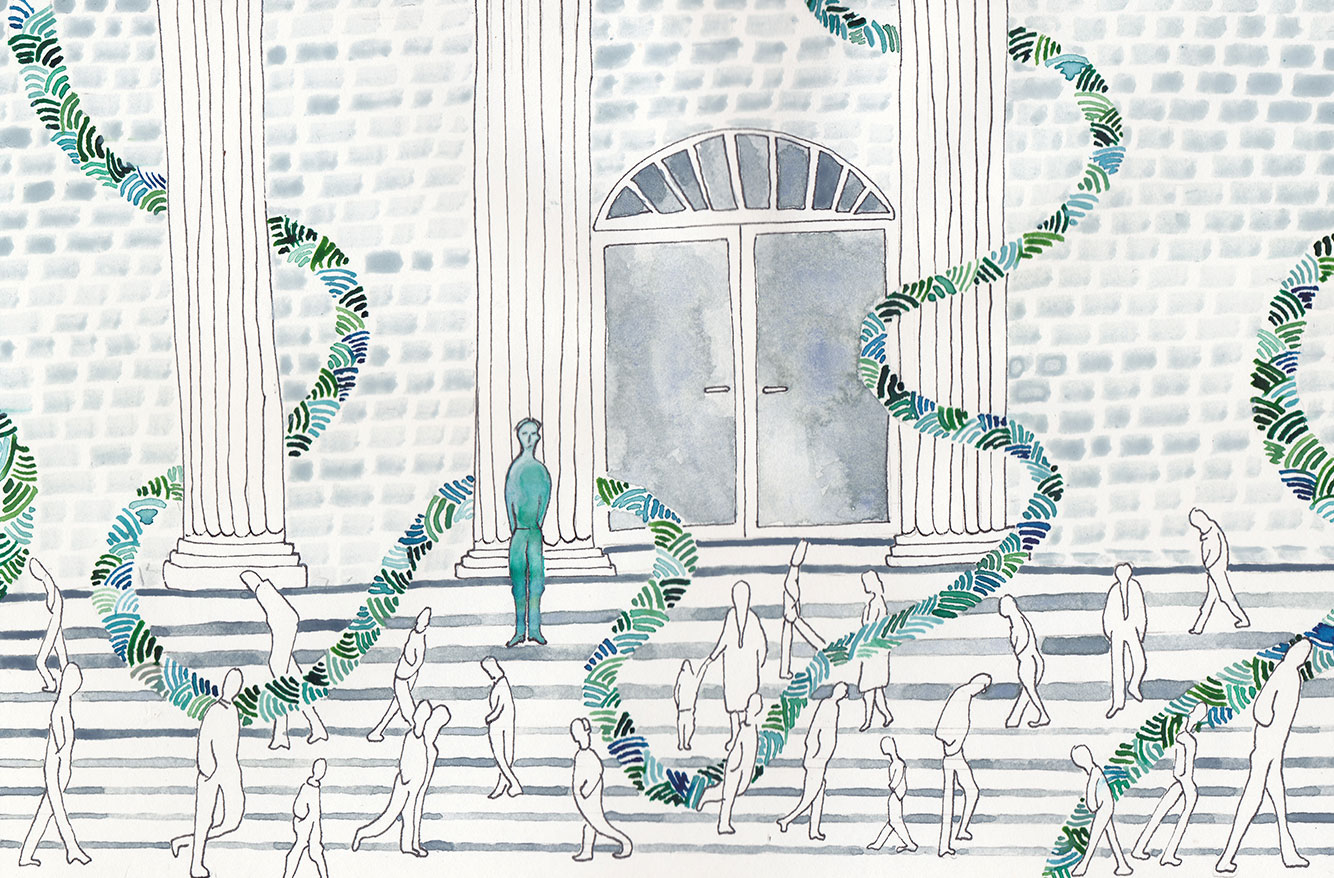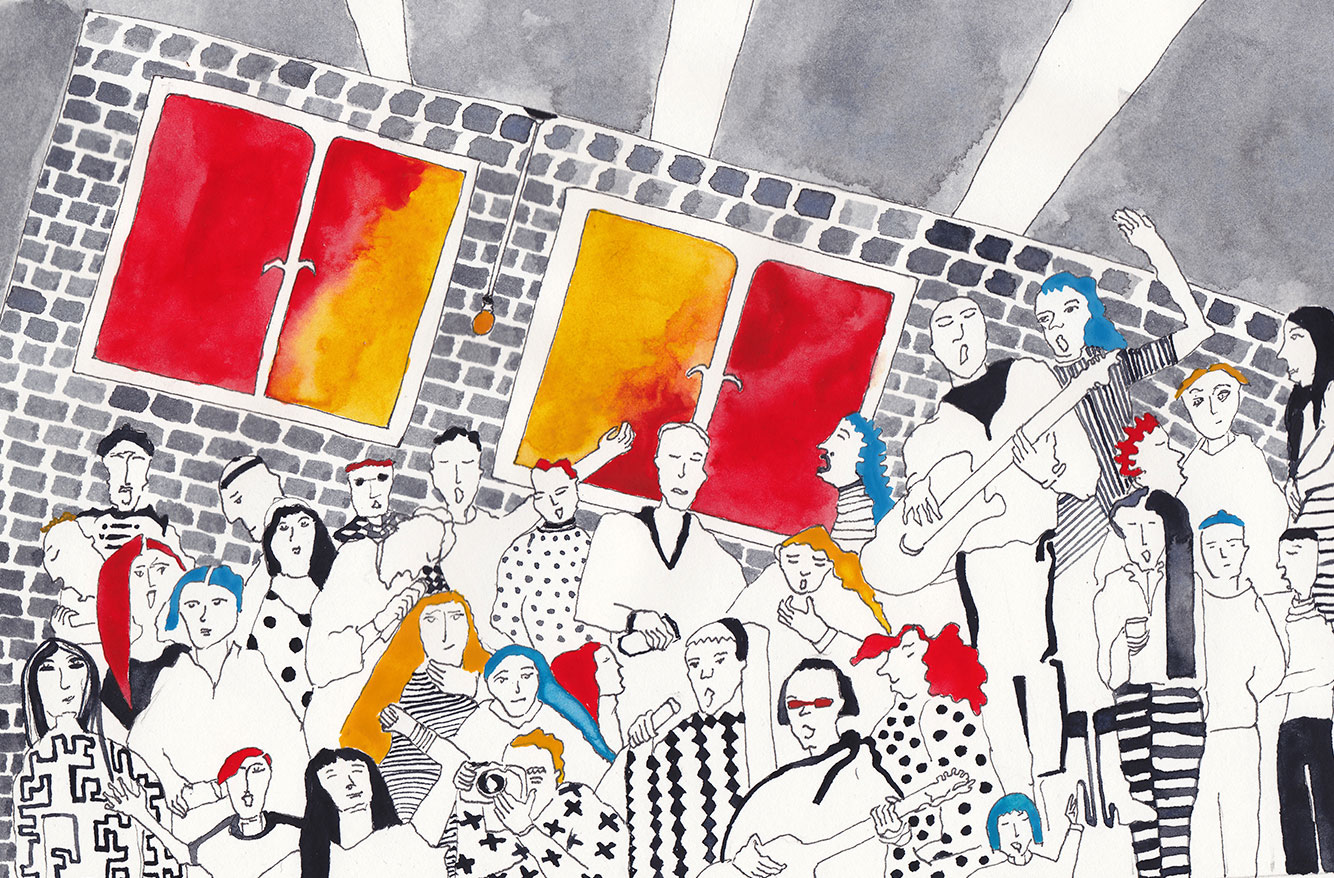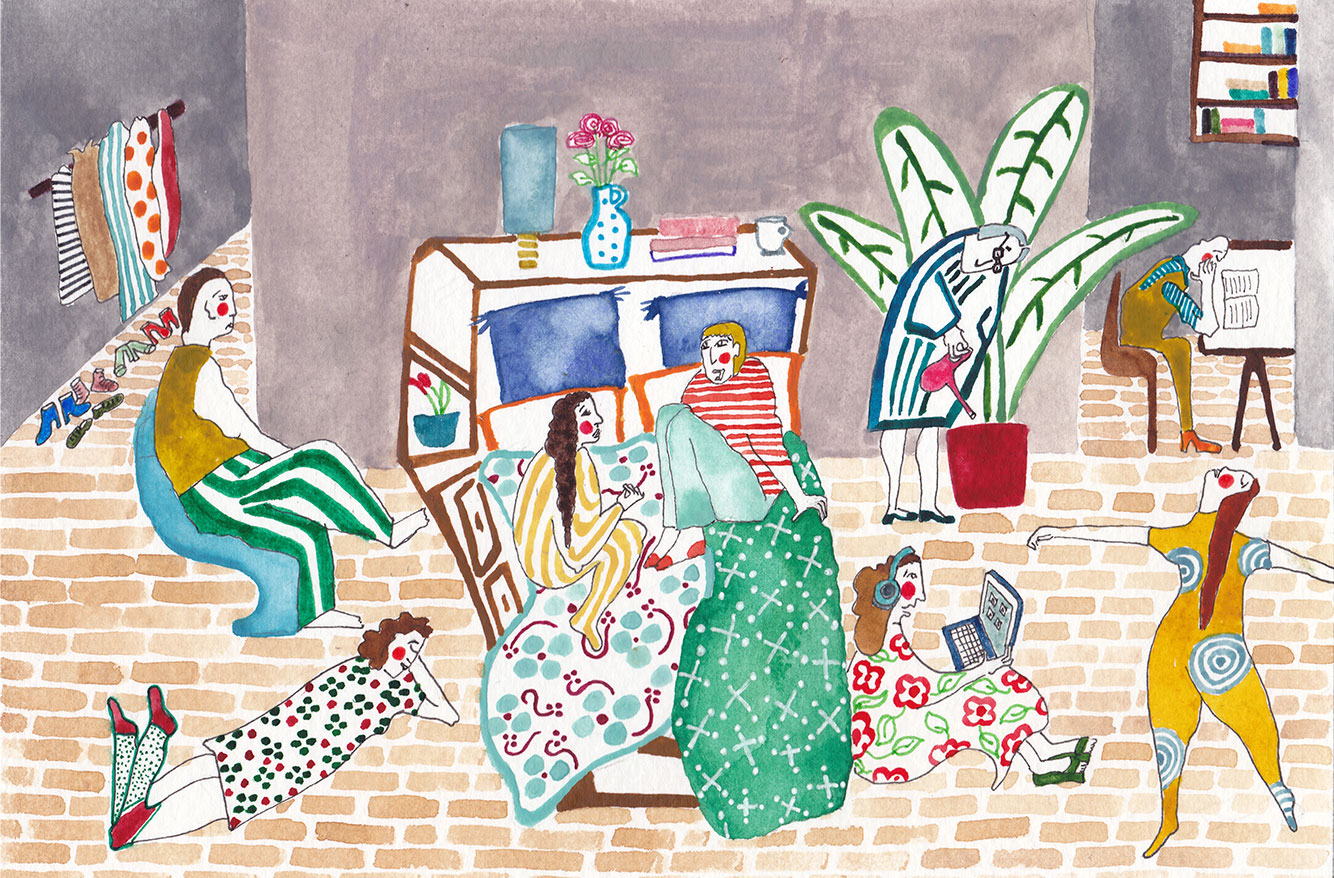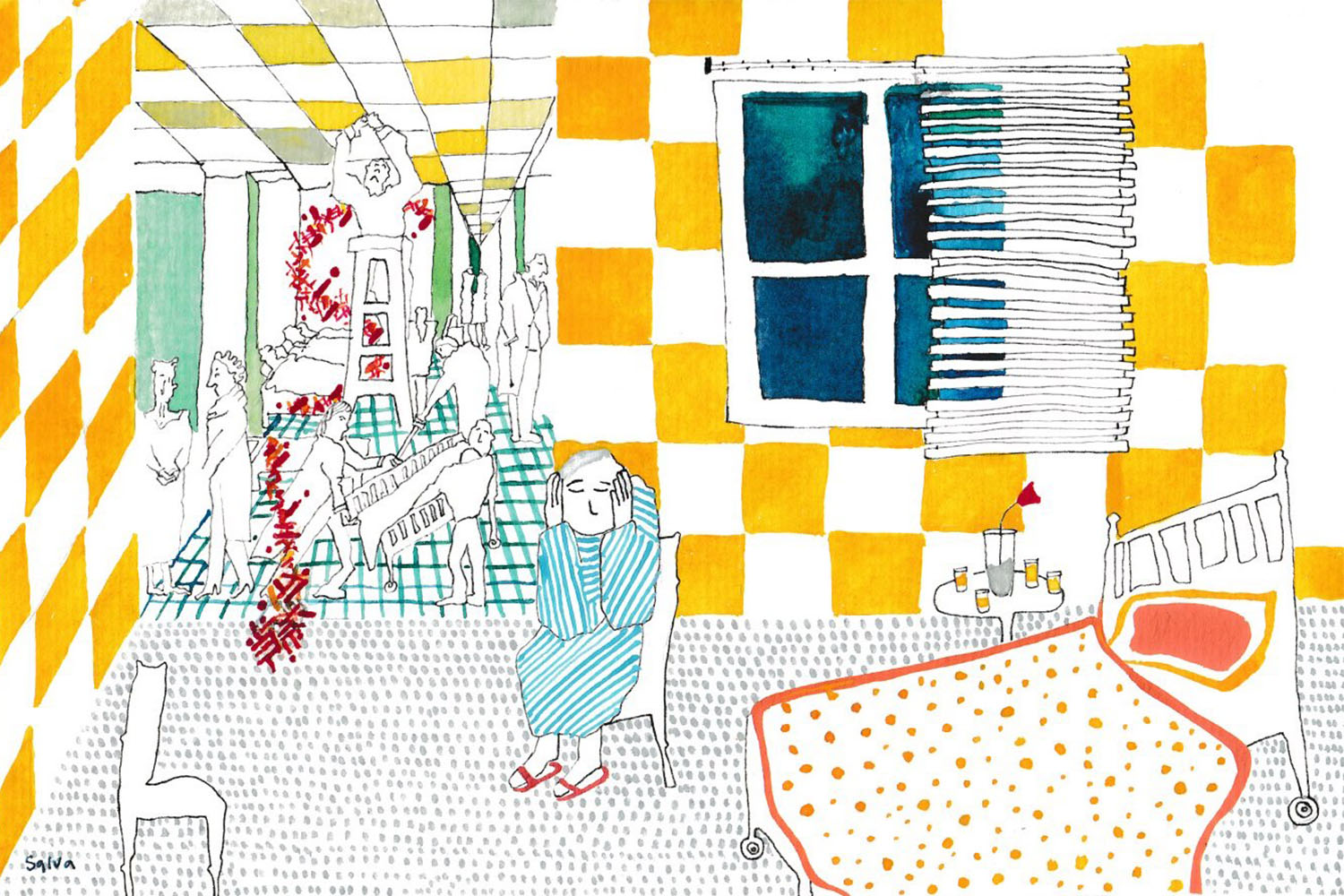
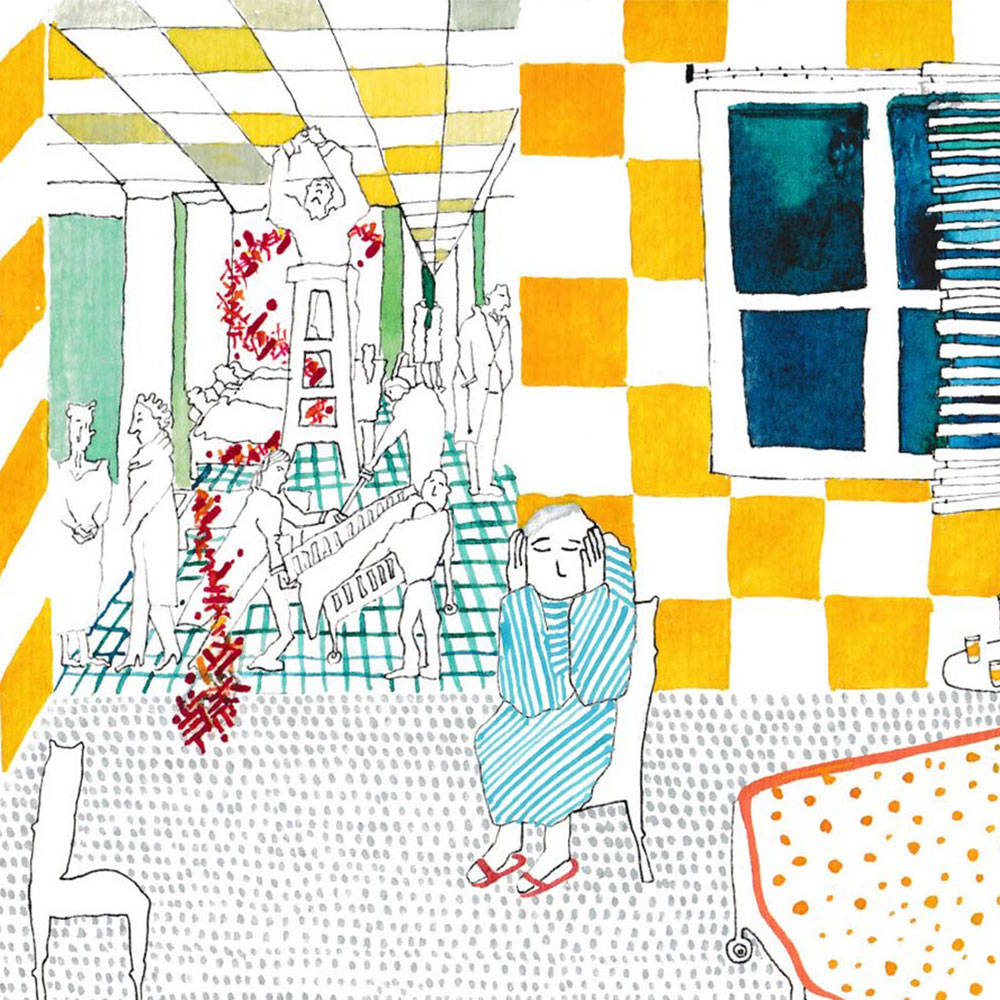
During the pandemic, hospitals suddenly became quiet. There were no visitors allowed and far fewer patients, as surgeries and procedures were rescheduled to reduce the risk of COVID exposure. That meant fewer beeping machines, fewer carts rattling down the hallway. There was subdued chatter at the nursing station, and a kind of sad silence in many patients’ rooms. “We have all noticed it’s been quieter, though the reasons for that aren’t good” says Dr. Christine Soong, director of the Hospital Medicine Program at Mount Sinai Hospital.
Since implementing a noise reduction program at her hospital five years ago, Soong is particularly attuned to the dips and peaks of hospital volume. She knows that the noise problem at hospitals is a serious one. More than just an annoyance for patients and staff, excessive noise can lead to lack of sleep, delirium, longer recovery times, and even addiction to tranquilizers. If a hospital’s mission is to improve the health of its patients, then noise—the 24-hour symphony of talking, beeping, and buzzing that fills a busy hospital—is one of the biggest hurdles.
When Jodi Kimm, a retired music teacher, had her hip replaced at a downtown Toronto hospital, she didn’t sleep for 48 hours. The first night, she was up due to a severe reaction to the anesthetic. The second night, nurses and doctors were checking her elderly neighbour on the other side of the partition throughout the night. At one point, nurses took the woman for a diagnostic test, and then brought her back at 2:00 am, flipped on the lights, and talked to each other “at fortissimo levels, as if I wasn’t even in the room,” recalls Kimm. By the morning, Kimm felt a mix of “exhaustion and anger” that is familiar to anyone who hasn’t slept in two days.
Kimm’s experience is a common one. In 2019, the Canadian Institute for Health Information compiled patient survey results for 300 hospitals across Canada. Patients were least satisfied with the noise level during their stay, with only 38 percent saying their rooms were quiet at night. The question on noise scored lower than every other issue, from doctor communication to length of stay to staff responsiveness. Hospital noise is known to make it hard for patients to sleep, even though it’s well documented that sleep is vital to health. A study of 207 patients admitted to two downtown Toronto hospitals found that those who had a “high trauma” stay, marked by disturbances in key areas like sleep, nutrition, and mood, were much more likely to be readmitted to the hospital after 30 days compared to those who had a “low trauma” stay.
Dr. Soong stumbled upon the noise problem. She wanted to figure out why patients were being prescribed benzodiazepines—tranquilizers like Valium—while in the hospital at such high rates. In early 2015, 15 percent of the patients at the medical and cardiology units in Mount Sinai Hospital, where Soong works, were prescribed a benzodiazepine or sedative hypnotic while in the hospital, a rate in line with comparable hospitals. In interviews with health providers, Soong and her team discovered that patients were primarily being prescribed the drugs for agitation at night, so they could sleep.
The solution wasn’t appropriate to begin with: studies show benzodiazepines and sedative hypnotics don’t improve the duration of sleep by much, and they reduce a patient’s deep sleep, the most important, restorative component of rest. The drugs have other side effects, too. One of the biggest concerns is that they make patients groggy during the night and the next morning, putting them at risk of falls and injury. And there’s a risk of addiction. “The body becomes dependent on benzodiazepines in a short period,” says Soong. One study found that three percent of patients who were started on a benzodiazepine in the hospital went on to take the drug routinely for years.
Though Soong’s intervention mostly focused on educating providers about why they shouldn’t prescribe benzodiazepines for sleep, she and her team knew they had to offer alternatives. They talked about the importance of “sleep hygiene,” including avoiding giving patients caffeine late in the afternoon and discouraging patients from using screens before bed. And they discussed the data from their survey of patients and caregivers with nurses, showing that many identified nurses’ talking as a sleep disturbance. “The nurses hadn’t even realized that they’re talking that loud at night,” says Soong.
At Sunnybrook, Dr. Barbara Liu oversaw a similar intervention to reduce benzodiazepine and other sleeping drug prescriptions by tackling noise. As part of the intervention, “noise lights” that resemble traffic lights were placed at several nursing stations. The lights change from green to yellow to red as the noise levels rise. “When the noise level is escalating, everybody can see that and recalibrate themselves,” she explains. Like in the Mount Sinai intervention, Liu’s team also cut out unnecessary middle-of-the-night-visits. “If the patient is stable, they didn’t need to have a middle-of-the-night vital signs check,” Liu explains.
Another way hospitals are tackling noise is with technology. At Toronto Western Hospital, when a patient pressed a button to call for a nurse, their request would blare out at the nurse’s station. Hospital staff realized how much of a problem the overhead announcements were after conducting a survey of patients’ experiences, explains Sandra Li James, director of professional practice at the hospital. So two years ago, the hospital introduced a brand new system: the nurse’s phone buzzes, and patients can talk to them directly. The hospital also routinely asks patients about noise, knowing they might not report it without being given an opportunity. As Li James explains, “sleep is important to prevent patients from developing delirium,” or the sudden onset of confusion, which resolves when sleep and routines are reestablished.
While managers at existing hospitals can only do so much to minimize noise, new hospitals and wings offer greater opportunities. When Humber River Hospital was built several years ago at Keele Street and Highway 401, administrators were able to incorporate noise reduction efforts into the architecture. In the building plan, “there is a whole section on acoustics and vibration,” explains Jennifer Tredinnick, senior director of planning and projects at Humber River Hospital. A big motivation was to promote sleep and relaxation for patients, but managers knew that reducing noise could positively impact staff too. “There are studies that show ambient noise that creates distractions can make it difficult to focus and lead to mistakes,” says Tredinnick.
The hospital was designed with densely insulated walls in the patient areas, and 80 percent of rooms are private, so patients don’t have to worry about a neighbour talking, snoring, or getting up to go to the bathroom. Heating and air conditioning equipment was placed in the ceilings above corridors, rather than above rooms, to mitigate the whirring and rattling. And the very layout of the hospital was radically redesigned, with service elevators located in the middle of the floors in a walled-off central area. Carts full of linens, food, and other supplies go up and down into these “back of house” areas and can usually be walked the short distance to patient rooms. That’s meant a dramatic reduction in the noise of rattling carts moving supplies across a floor. In addition, many floors have several nursing stations, in the middle and ends of the floor, so that the nursing station isn’t the hub of activity it is at many other hospitals. According to Treddinick, patients now frequently describe the hospital as peaceful. “That’s always the aim when you’re providing care to unwell people, that you give them a safe, peaceful, comfortable experience.”
At Mount Sinai, as the COVID curve has flattened, the noise has begun to pick up. Hospitals are booking surgeries again and patients feel more comfortable going to the emergency department. But Soong is hopeful the changes her hospital put in place before the pandemic to reduce noise will mean decibel levels never return to what they were a few years ago. William Mundle, one of the nurse educators involved in Soong’s noise reduction project, thinks there’s no going back to the loud nights of five years ago, now that the nurse teams have been educated on the importance of noise reduction. “We recognize that sleep can be just as important to patients’ health as some types of medications we’re giving patients,” he says.

